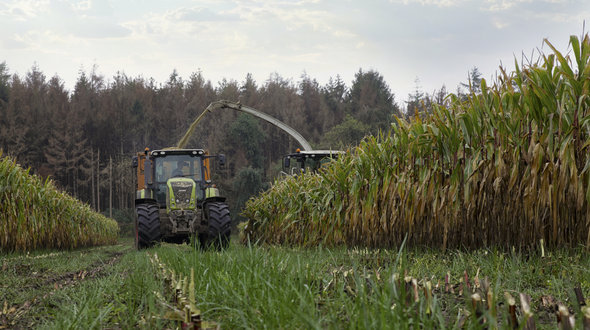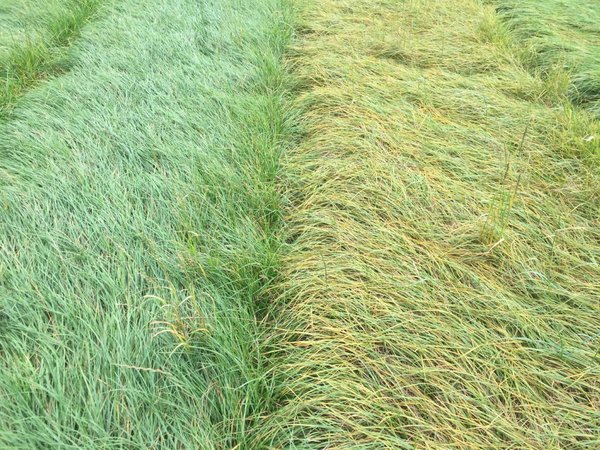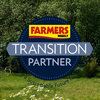Bar Tech September 2021
Welcome to the latest BarTech with thoughts, tops tips and advice from the UK Grass Experts on grass and herbal leys for livestock, arable and the environment.

Welcome to the latest BarTech with thoughts, tops tips and advice from the UK Grass Experts on grass and herbal leys for livestock, arable and the environment.

With maize harvest soon to commence, have you thought about your post maize & cereal field management? Maize harvests, particularly in the north or in times of unpredictable weather, can be very late in the year - grass can be a very useful crop to follow - providing a catch crop for soil stability and mopping up nutrients, an overwintering feed...
Autumn presents an excellent opportunity to establish grass and multispecies swards. According to a recent AHDB survey, 66% of respondents are reseeding in autumn. Soil and air temperatures remain warm and generally cool down at a steady rate, and certainly in the past few years, there is also a much-reduced risk of drought stress. To get the best results though, it requires attention to detail.
Take into account your geographical location, the soil conditions in the field, the aspect and topography, as well as when and what you plan to sow. Your mixture choice will depend on the demands of the field;
Your reseed is the future of your farm’s productivity, so ‘rear’ it with the same care an attention you would with heifers or ewe lambs, the future of the herd or flock.
Preparation is Key to Success
Having good soil health, soil structure and available nutrients (particularly pH, and P & K) in the seed bed are vital for a successful reseed at any time of year. Fields destined for an autumn reseed should be soil sampled if they have not already been so, and any nutrient deficiencies addressed before putting seed in the soil. Find out more in BarTech February for details on soil health.
Mitigate the risk of environmental impact by planning well in advance and aim to reseed as early as possible to allow quicker establishment giving the opportunity for better ground cover and root developments to avoid issues with soil erosion and nutrient leaching or run-off.
When should an Autumn grass reseed be carried out?
Perennial grasses and clovers require soil temperatures of 8OC and 10OC respectively for optimal germination and plant establishment. Hybrid Ryegrasses require 6OC and Italians or Westerwolds 4OC but just because these species CAN germinate at these temperatures does not mean you should wait; sowing sooner will give a longer window for establishment. Sooner is always better than later.
Heavier soils are prone to holding onto water and cool down quicker than sandy soils so the window for reseeding those fields can be shorter and generally, the reseeding window is shorter the further North you travel. Bear in mind that although conditions can still be excellent for reseeding, in autumn we are always in a declining temperature and increasing rainfall trend and any delay can cause significant impacts to the number of established plants, the extent of plant tillering, the potential dry matter yields and overall sward longevity.
What to prepare for an Autumn grass reseed
Seed beds must be fine and firm, rolled well, before and after seeding to ensure excellent seed/soil contact which aids germination as seeds will have moisture from the soil. A well rolled seed bed can potentially reduce the risk of damage from pests such as leatherjackets by restricting their movement in the soil. Rolling can also help avoid soil loss in inclement weather by providing better consolidation, particularly on lighter soils. It is important to sow grass into a clean seed bed because the opportunities for weed control are more limited at this time of year. If weeds are known to be an issue, it may be worth omitting clover from a mixture to allow for spring weed control next year, then oversow with white clover. Ideally though, including clover in a reseed reduces the need for artificial N and boosts overall sward quality and palatability.
Autumn grass grazing management
Ideally, all autumn sown reseeds will be established in plenty of time to allow a light autumn graze. This first graze is not about feeding animals, but about managing the sward. Doing a light grazing using the lightest class of stock available on the farm will encourage tillering by allowing light to reach the base of the plants and prevent too much overwintered cover that can cause a build-up of dead material in the base of the sward. Again, the earlier you reseed gives better opportunities to allow for autumn grazing to aid the grass, but also avoid poaching if conditions turn very wet later on.
To ascertain if a sward is ready to be grazed a ‘Pluck Test’ should be carried out; grasp the ryegrass seedling firmly between your thumb and forefinger, then tug in a single, quick movement (to mimic an animal biting). If the leaves break off and the roots stay in the ground, the pluck test is passed. Also make sure that the ground is firm enough to carry stock and never graze before the grass plants have produced their second tiller leaf. Always leave a residual height of 4-5cm. Where more legumes or herbs have been included in the sward, these heights will need to be increased to allow them to establish better. Some are very susceptible to grazing pressure in the early establishment phase.
Read our good grassland management guide to find out more

As a key player in the National Institute of Agricultural Botany (NIAB) for the England and Wales Recommended Grass and Clover Lists, Barenbrug's trial site, Cropvale, is one of the of the sites used for disease trials. Barenbrug's involvement in the research of diseases in grass for agriculture is invaluable in forming the Recommended Grass and Clover Lists, ensuring farmers can select the very best varieties resistance to diseases in their geographical area.
This month the key efforts were monitoring the crown rust disease levels. It was noted the disease came very early this year, mostly likely due to the hot weather both stressing the grass and creating more favourable conditions for the fungus, which favours temperatures around 20-25°C. Cropvale is recognised as the leading trial site for scoring the disease tolerance and susceptibility of grasses in the UK and was added to NIAB’s disease evaluation work in 2014. Selecting varieties with resistance to Crown Rust and other disease is essential to farmers as, as well as being less palatable to livestock, diseased fields show a noticeable decrease in fresh weight.
Image showing how different varieties react to Crown Rust


As a key member of the Farmers Weekly Transition Partner Network...
As a key member of the Farmers Weekly Transition Partner Network, Barenbrug UK is part of a selected, UK-wide community of farmers, industry stakeholders and influencers working together to secure a sustainable future for your farm business.
Discover our range of grass, forage, clover, herb and legume mixtures for the agriculture sector.
Discover our range of grass, forage, clover, herb and legume mixtures for the agriculture sector.
Discover our range of grass, forage, clover, herb and legume mixtures for the agriculture sector.